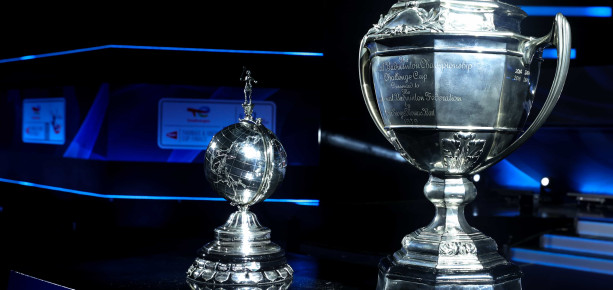THE HISTORIC JOURNEY OF THE THOMAS CUP & UBER CUP
It is for two trophies – one 71cm high and the other, 45.7cm – that the world’s strongest teams will contest in Bangkok, Thailand from 8 to 15 May 2022.
The Thomas Cup, the older and the larger of the two, is the handsome prize awarded for the World Men’s Team Championships. Made by Atkin Bros of London, the silver-gilt trophy consists of a cup on a plinth, with the figure of a player atop the lid. Its name honours Sir George Thomas, legendary Founder-President of the International Badminton Federation (now BWF), who was keen that badminton should have its own version of the Davis Cup in tennis.
The Thomas Cup has come a long way – but it did not have an auspicious start. Shortly after Sir George proposed the idea for an international men’s team championships in 1939 (just five years after IBF was founded), World War II broke out. The plan however was not shelved, and in 1946, at the Council’s first AGM since 1940, the men’s championship was planned for 1948-49.
Nations were divided into four zones: Pan American, Asian (East and West), Australasian and European. The competition was to be held once in three years, the format consisted of best-of-nine ties: five singles and four doubles. In the first final, Malaya overcame Denmark 8-1. Sir George presented the trophy to winning captain Lim Chuan Geok.
The Thomas Cup would go on to see many more famous battles. Malaya swept the first three editions, but by 1957-58 it would be Indonesia that rose like a phoenix, decimating all challengers for the next two decades. The only interruption to its reign was in the 1966-67 edition when Malaysia was awarded the tie due to spectator trouble in the final at Jakarta. Changes were made to the format soon after. Until 1966-67, the inter-zone winners had to play the defending champions in the final of the ‘Challenge Round’ for the trophy, but after that year, the Challenge Round was abolished.
The arrival of China into the international fold in the early 1980s provided another twist. The Chinese, despite their limited international exposure until that time, proved they were already world-beaters. The final, against holders Indonesia, would prove to be one of the most riveting encounters of all time: 5-4 for China on their debut, with Han Jian the star of the event by beating three-time All England champion Liem Swie King 15-12 11-15 17-14. By the next edition (1984), two significant changes were brought about: the Thomas Cup was to be conducted simultaneously with the Uber Cup every two years instead of three, and ties would be fought over five matches instead of nine. More changes in the qualification format would be made in subsequent editions.
Overall, Indonesia lead the tally with 15 titles; China are second with 10. The Chinese, winners of five straight titles from 2004 to 2012, suffered a shock semifinal defeat in the 2014 edition to Japan, who went on to take their first ever title beating Malaysia in an exciting final in New Delhi.
It was then Denmark’s turn to create history in 2016 as they became the first non-Asian country to win the Thomas Cup, which they did beating Indonesia in the final in Kunshan.
The 2018 edition saw China once again storm to the title, beating Japan 3-1 in the final in Bangkok.
The 2020 edition was held in October 2021 as the 2020 season was disrupted due to the COVID-19 pandemic. Indonesia broke a 19-year drought, beating China 3-0 in the final.
The World Women’s Team Championships was proposed in 1950 by England’s great pre-War player Betty Uber (supported by New Zealand’s Nancy Fleming), and eventually came into being in 1956-57. The trophy, donated and designed by Betty Uber, consists of a female player on a swivelling globe, mounted on a plinth, and was made by London’s silversmiths Mappin and Webb. The format in its early years consisted of three singles and four doubles; from 1984 onwards, the number of matches per tie was reduced to three singles and two doubles, similar to the Thomas Cup.
Although there are similarities between the two championships, there was a difference in the early patterns of dominance. The USA, headed by such stalwarts as Judy and Sue Devlin and Margaret Varner, picked up a hat-trick of titles in the first three editions beginning 1956-57. The balance of power then shifted to Asia, with a 5-2 victory for Japan in the final of a captivating final against the USA in 1966. Japan went on to win four of the next five editions; the only interloper being Indonesia (1974-75).
China arrived with a bang in 1984. A measure of their success is the fact that from 1984 to 2016, they won 14 of the 17 editions. Indonesia (1994 and 1996), Korea (2010) and Japan (2018) are the only three countries since 1984 who have disrupted China’s winning streak. Japan, once a major power in the women’s game, were Uber Cup winners in 1966, 1969, 1972, 1978 and 1981 before their fortunes slid. However, the last decade has seen them rise once again, and they reclaimed the title in 2018.


































